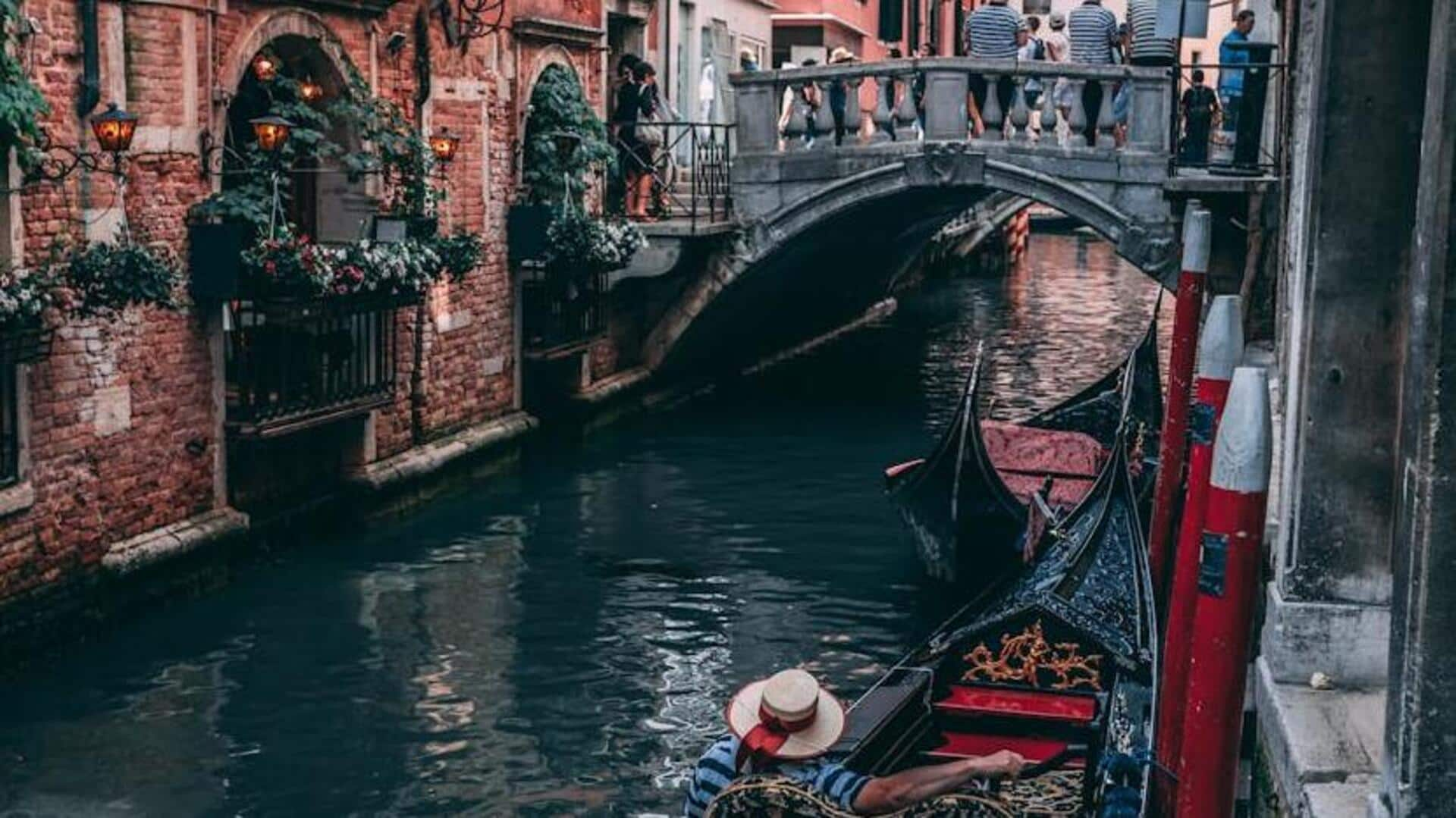
Traveling to Venice? Don't believe these myths
What's the story
Venice, a city celebrated for its elaborate waterways and historic architecture, is often enshrouded in myths about its perpetual submersion. While the image of a city constantly underwater is captivating, the reality is more complex. This guide seeks to dispel these myths, offering a clearer picture of Venice's intricate and nuanced relationship with the water that surrounds and defines it.
Myth 1
High water isn't constant
The phenomenon known as "Acqua Alta" (high water) does lead to flooding in Venice, but it's not an everyday occurrence. It typically happens in autumn and winter and is usually predicted. Raised walkways are set up for navigation during these times, and life goes on with a unique Venetian resilience. Understanding this can help travelers plan their visit accordingly.
Myth 2
Sinking stories exaggerated
Venice is indeed experiencing subsidence, but it's not the rapid sinking often depicted in sensational stories. The city has been slowly descending over centuries, influenced by natural geological processes and human activities. Recent efforts to reduce groundwater extraction have significantly slowed the rate of subsidence, making the "sinking city" narrative less dramatic than what is commonly presumed.
Myth 3
Flood prevention progress
The MOSE project stands for Modulo Sperimentale Elettromeccanico, translating to Experimental Electromechanical Module. It's a bold initiative by Venice to combat flooding. Featuring a series of mobile barriers, the system can temporarily separate the Venetian Lagoon from surging tides. Although it's not fully operational yet, MOSE is a critical step forward in protecting this treasured UNESCO World Heritage site from high water events.
Myth 4
Everyday life flourishes
Despite the concerns about rising water levels, the people of Venice have embraced their unique environment. The city pulses with life, hosting lively markets and cultural festivities. Its community is robust, never allowing the seasonal "Acqua Alta" to subdue its vibrant spirit. Indeed, Venice's true allure lies in its spirited adaptation to the challenges posed by its watery foundations.
Plan
Planning your visit smartly
For an optimal visit to Venice, free from the worries of "Acqua Alta," plan your trip for late spring or early summer. During these seasons, high waters are less frequent, allowing for a more relaxed exploration of the city's wonders. Keep abreast of local weather and tidal forecasts to ensure a smooth experience as you immerse yourself in Venice's enchanting beauty, unmarred by floods.